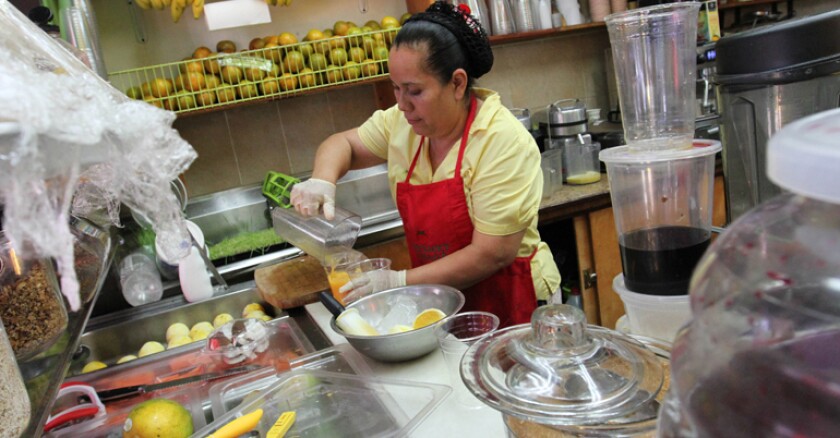The Congressional Budget Office said in a report released Monday that nearly doubling the federal minimum wage to $15 per hour could cost 1.3 million jobs when fully implemented by 2025, though millions would see higher wages and the number of Americans living in poverty would decrease.
The report made clear that its estimate of 1.3 million potential job losses, which would equal roughly 0.8% of the workforce, was a median forecast, and that job losses could be substantially smaller _ or larger. In a worst-case scenario, some 3.7 million jobs could be lost, the agency said. On the other hand, wages could rise for as many as 27 million workers.
The CBO's findings are likely to color the debate over legislation headed to the House floor next week that would raise the minimum wage to $15 per hour in six annual increments. The bill, approved by the House Education and Labor Committee in March, has zero Republican co-sponsors. An identical bill introduced in the Senate by Bernie Sanders, I-Vt., hasn't advanced in that GOP-controlled chamber.
The federal minimum wage has been set at $7.25 per hour for the past decade, although many states and localities have set their minimum wage above that level. Currently, 29 states, as well as Washington, D.C., Guam and the U.S. Virgin Islands, have higher minimum wages; the federal increase would impact 21 other states as well as Puerto Rico and the Northern Mariana Islands.
The highest minimum wage currently is $14 per hour in Washington, D.C. No states currently have a $15 minimum wage, but 18 have scheduled increases in recent years, and six states plus the district are planning hikes to $15, according to the National Conference of State Legislatures.
Some House Democrats from states with lower or no minimum wage have resisted efforts to raise the national wage to $15 per hour, arguing instead to adjust for cost of living and regional disparities. Currently, there are 205 co-sponsors on the House bill, authored by Education and Labor Committee Chairman Robert C. Scott, D-Va., which means 29 Democrats haven't signed on.
Without any GOP support, party leaders need to ensure the support of another 11 Democrats to get to the required 217 votes to pass the bill on the floor.
In a letter to the rank-and-file outlining the July agenda last week, House Majority Leader Steny H. Hoyer, D-Md., exuded confidence that the leadership would have the votes: "The week of July 15th, the House will consider a long-overdue increase in the minimum wage. Last month, we marked the longest period of time without an increase."
The previous longest streak without an increase lasted from Sept. 1, 1997, to July 24, 2007, when the federal minimum wage was stuck at $5.15 per hour, according to Labor Department statistics.
The CBO said increasing the federal minimum wage would have two effects on low-wage workers. The increase would cause earnings and family income to rise for most low-wage workers, lifting some families out of poverty. But according to CBO, other low-wage workers would become jobless, and their family income would fall, in some cases, below the poverty threshold.
Overall, the $15 minimum wage option ultimately could reduce family income in 2016 by about 0.1%, in 2018 dollars.
Monday's release follows a cost estimate released by the agency in April, after the Education and Labor panel had reported its bill a month earlier.
At the time, the CBO estimated that enacting the boost to $15 an hour would cost employers an extra $51 billion annually by the time the measure was fully implemented in 2025, mostly affecting private employers. That's a tiny fraction of the roughly $9 trillion in total wages and salaries paid to U.S. workers this year, though the CBO said in April that the costs could be lower if companies respond by reducing hiring.
The CBO in Monday's report also evaluated two smaller increases in the minimum wage _ an increase to $12 and an increase to $10 _ that would have smaller effects.
The agency said the $12 option, in an average week in 2025, would have smaller effects. It would increase wages for 5 million workers who would otherwise earn less than $12 per hour, while causing 300,000 other workers to be jobless. The number of people with annual income below the poverty threshold in 2025 would fall by 400,000.
The $10 option would have even less impact. It would raise wages for 1.5 million workers who would otherwise earn less than that amount. The agency said the increase to $10 would have little effect on employment in an average week in 2025, and it would have scant effect on the number of people in poverty.
(c)2019 CQ-Roll Call, Inc., All Rights Reserved









